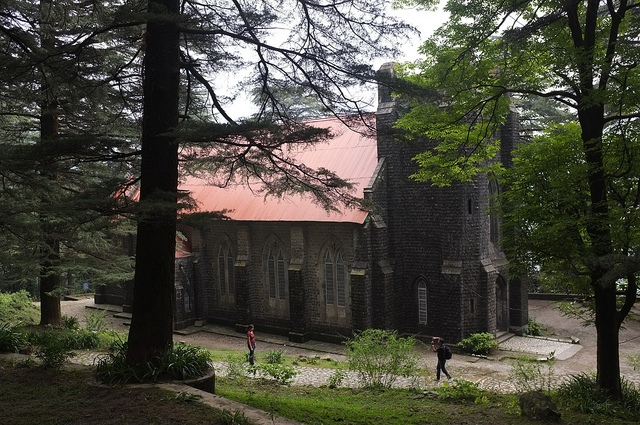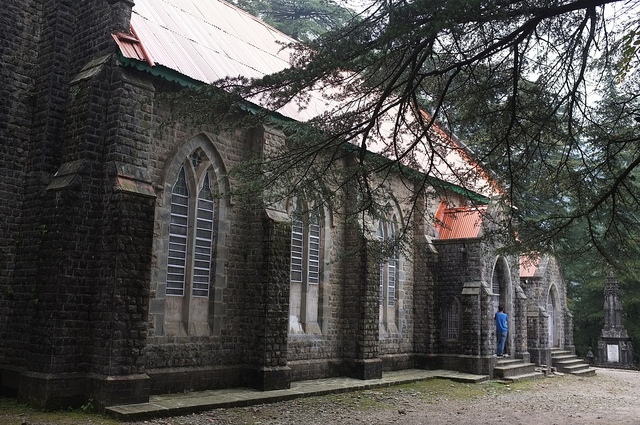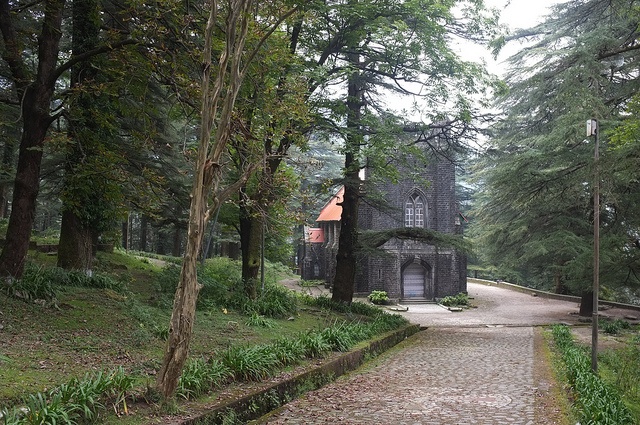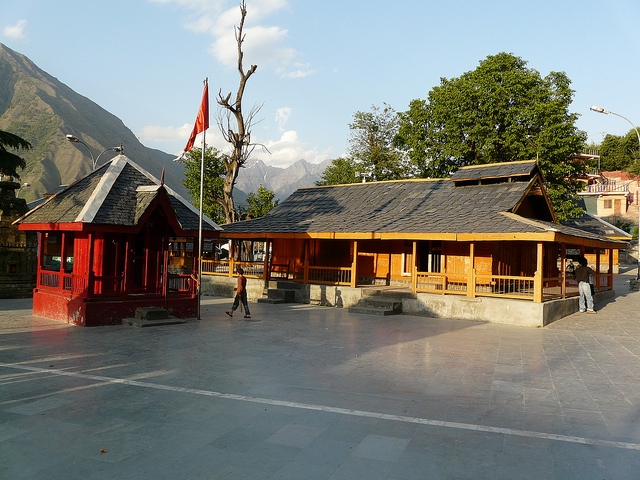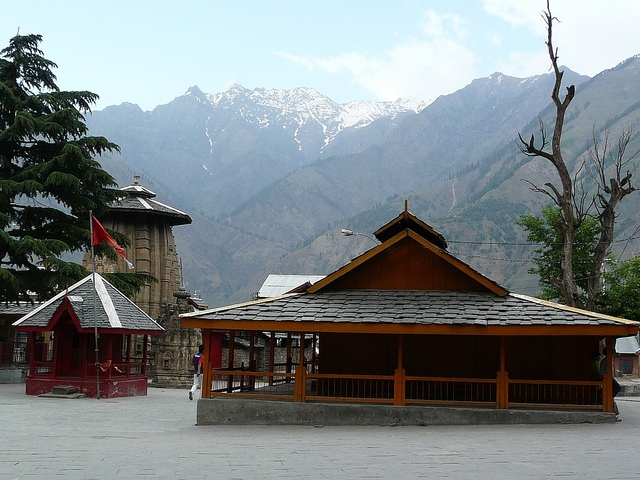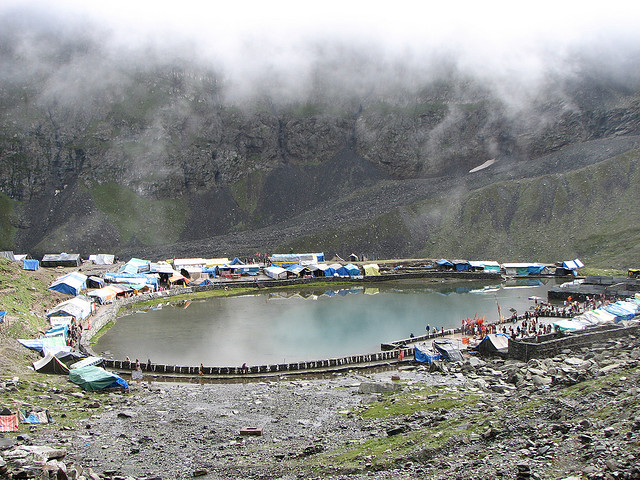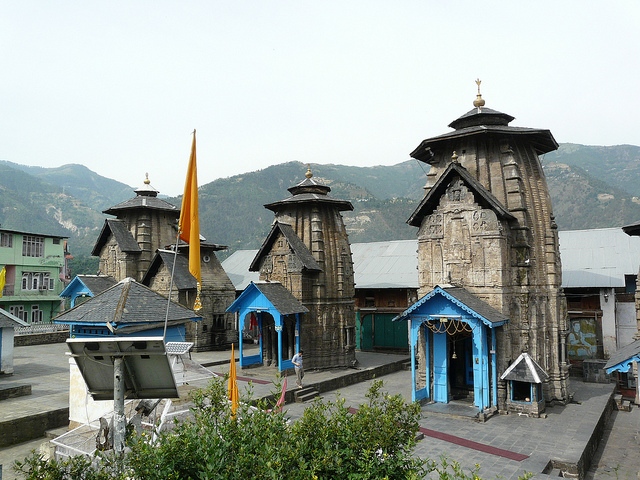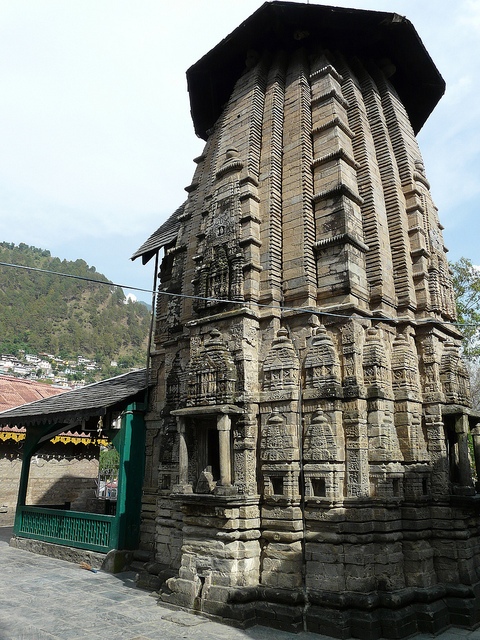The Hatkoti temple complex was built between 6th and 9th century AD during the Gupta period and its architecture and design were originally in classical Shikhara or tower style which represents ancient structure. Shikhara is conical at the top with a wide base.
The temple complex on the banks of the River Pabbar has a main temple dedicated to Goddess Durga and a smaller temple dedicated to Lord Shiva., both standing side by side.
The sanctum sanctorum called as Garbagriha is dark and the idol of Goddess Mahishasurmardini also called as Mata Hateshwari, is a bronze idol, eight armed and riding a lion as she drives her spear though the heart of demon Mahishasura. On one side of an image is an inscription which is a variation of the Brahmini script and has been undeciphered till date.

